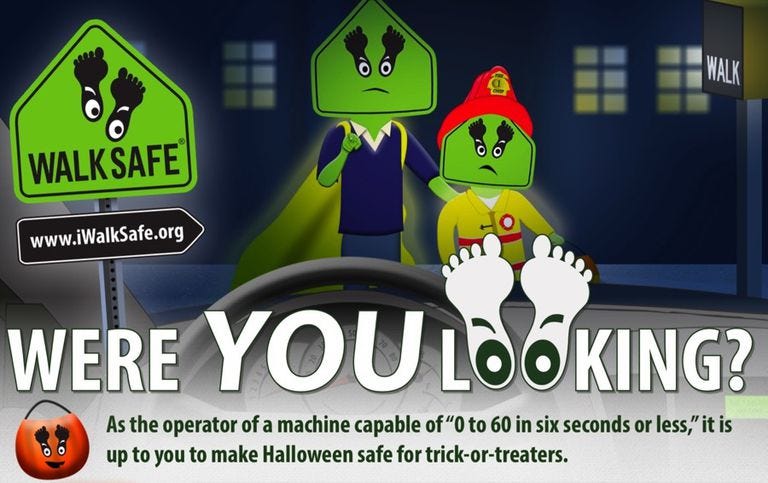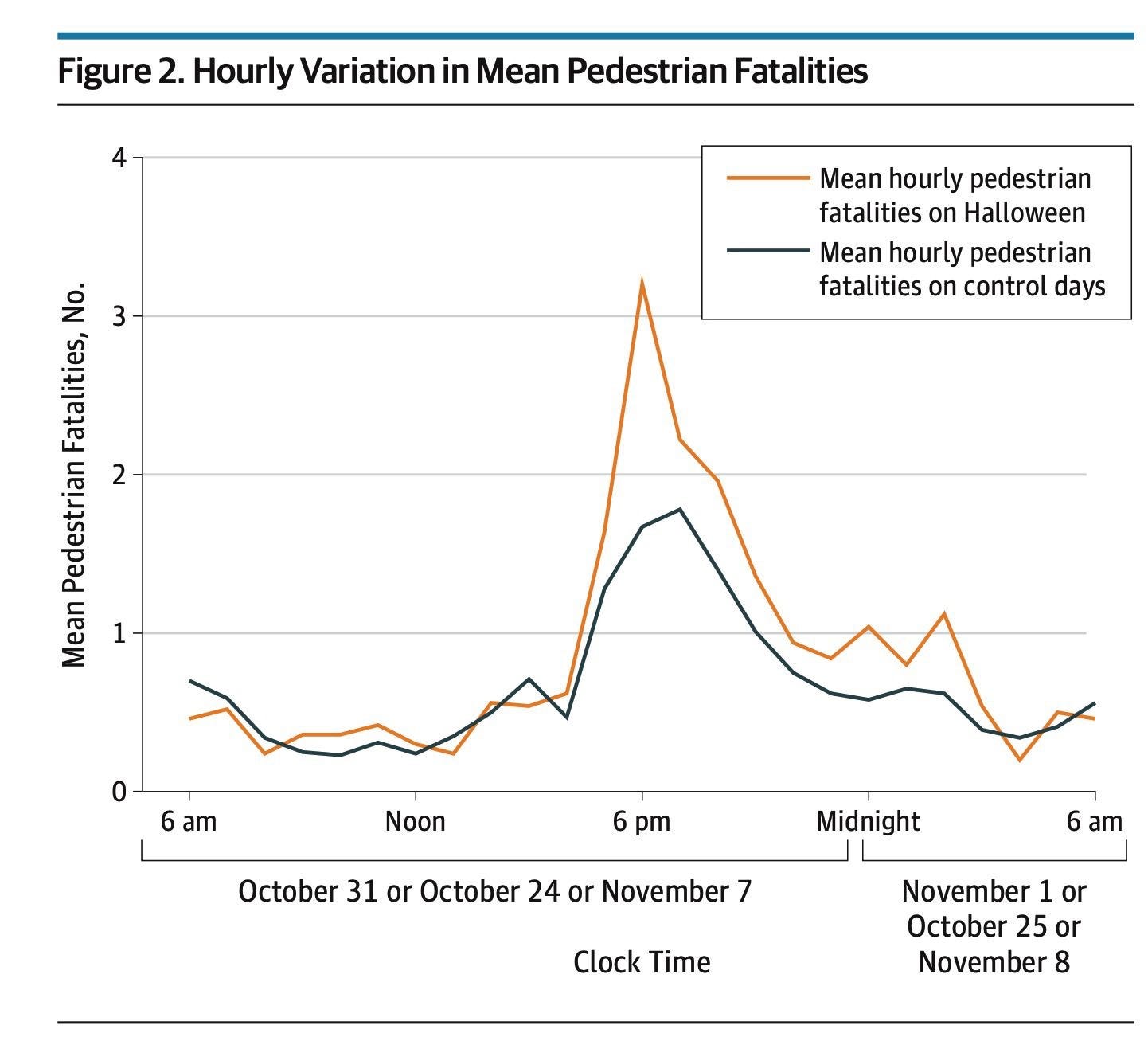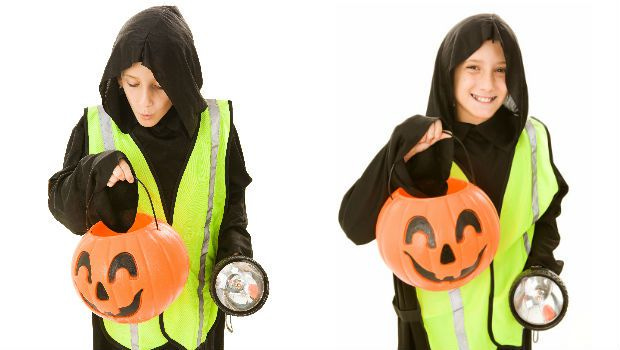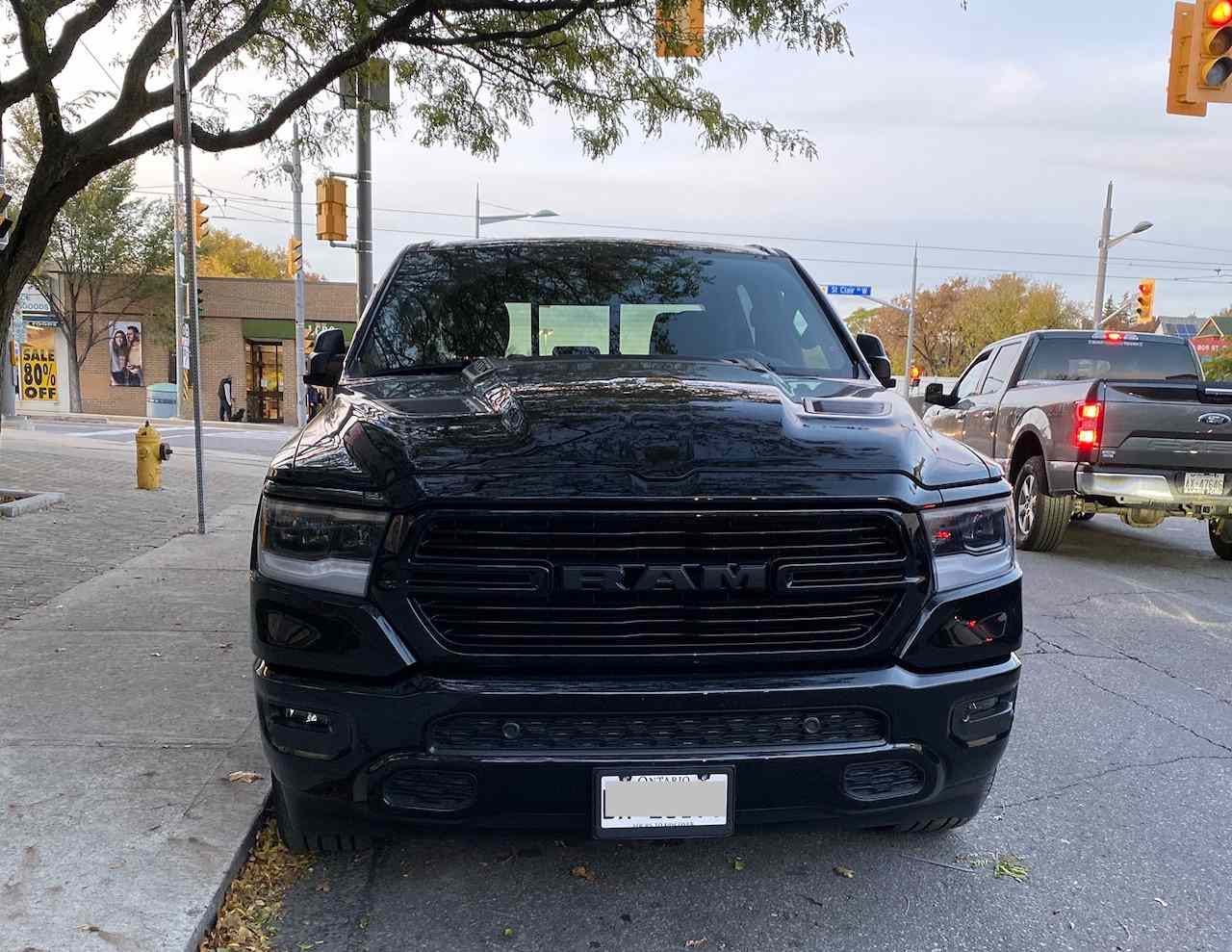Happy International Day of Danger and Death for Pedestrians
From the Archives: That's an alternate name for Halloween, but let's not forget the rest of the year.
I wrote this for Treehugger in 2019. It is gone from there, so I restored it here from my archives.
The "International Day of Danger and Death for Pedestrians" is what urban planner Sandy James calls Hallowe'en, because of the spike in the deaths of children who are out trick-or-treating.
She notes that a University of British Columbia study identified Halloween night as having a 43 percent higher risk of pedestrian deaths than any other night close to that date.
I was originally going to pick up on Doug Gordon's point and suggest that we should just ban driving on Halloween. Jake Offenhartz of the Gothamist does in a post titled We should ban cars on Halloween, quoting Gordon:
Halloween is predictable, the city could easily prepare for it. With a little forward thinking, it'd be pretty easy to designate, let's say, one or two really busy streets in every police precinct and have them be off-limits to cars so kids could have a safe place to walk around, even for a few hours.
Offenhartz quotes the same study as Sandy James, and says children are 10 times as likely to be killed on Halloween (I have read it a few times and don't see that) and suggests stronger action than just a few streets:
We should prohibit driving today — or at least some driving — for the obvious reason that it makes trick-or-treating more enjoyable, but also because adults have frankly forfeited their privilege to get behind the wheel in the vicinity of small costumed humans.
Both Sandy James and Jake Offenhartz link to the same paywalled research letter, Pedestrian Fatalities Associated With Halloween in the United States. We discussed this study last year, and this year, John Staples, lead author of the study, graciously shared it in its entirety with TreeHugger.
My normal War on the Car cri de coeur would be to agree with Offenhartz and Gordon and just say Ban Cars! on Halloween, and I was going to. But looking back at the earlier post, and re-reading the study, I realized that author Staples and his team were far more nuanced. They do note at the start:
Halloween traffic fatalities are a tragic annual reminder of routine gaps in traffic safety. On Halloween and throughout the year, most childhood pedestrian deaths occur within residential neighbourhoods.
But the problem isn't Halloween, or the kids not wearing bright clothing. The problem is systemic. The problem is design, and it is a problem all year long.
Such events highlight deficiencies of the built environment (eg, lack of sidewalks, unsafe street crossings), shortcomings in public policy (eg, insufficient space for play), and failures in traffic control (eg, excessive speed).
When we make kids dress in hi-viz and carry big flashlights and do the bright thing, or even ban cars on Halloween, we are dealing with one night per year, when we actually have a year-round problem. Instead, we should be fixing our roads and the pedestrian environment for every night.
Event-specific interventions that may prevent Halloween child pedestrian fatalities include traffic calming and automated speed enforcement in residential neighbourhoods. Pedestrian visibility could be improved by limiting on-street parking and incorporating reflective patches into clothing. But restricting these interventions to 1 night per year misses the point, since year-round application of effective traffic safety interventions will foster much greater progress toward eliminating pedestrian fatalities altogether.
There's no victim-blaming here, and really, no concentrating on Halloween on its own. None of this Trunk or Treat stuff. The researchers like Halloween and think it is a good thing, noting:
Halloween trick-or-treating encourages creativity, physical activity, and neighborhood engagement. Trick- or-treating should not be abolished in a misguided effort to eliminate Halloween-associated risk. Instead, policymakers, physicians, and parents should act to make residential streets safer for pedestrians on Halloween and throughout the year.
Sandy James, like TreeHugger, notes that the change in vehicle design doesn't help. Drivers of SUVs and pickups might not even see a child thanks to that high front end, and "pedestrians are twice as likely to die if they are hit by one." The study notes that parked cars make it more difficult to see kids.
But the study makes clear that the Halloween problem is one of degree – more kids die because there are more kids out there. But they die every other night of the year, too.
The real problem is that our roads and our vehicles are all dangerous by design. We should be worrying about this all the time; every day is an International Day of Danger and Death for Pedestrians.







Parents should guard their kids from unexpectedly running out into the street during a heightened sense of adventure and excitement pursuing candy and treats. Drivers should always remember they're piloting a guided 2000 lb missile and to drive defensively, not offensively (read: aggressively.)
From that chart, an increase of 1.75 fatalities per hour spiking to 3.25 (both estimated) per hour. Percentages are irrelevant with such numbers.
"...greater progress toward eliminating pedestrian fatalities altogether." And once you totally eliminate the fatality of walking by or on a street, what's your next target for Zero Risk, Lloyd? I keep asking, and also keep stating that LIFE is always a non-zero Risk event. There is no magic wand, no wrapping up into bubble-wrap, no amount of Laws and regulations, and no sarcastic King Canute that can make it otherwise.
But while we're playing this game, I swing you (having superglued our hands together to eliminate you falling on the asphalt) around to your severe lack of cognition concerning Politics - how will you accomplish such a result? It's nice to say, even if a bit hackneyed, "SOMEONE HAS TO DO SOMETHING ABOUT THIS!". Well, there, you've done that.
But what's the plan to accomplish it? In totality and not just a couple of streets a couple nights a year in a certain spot?
Meanwhile, I'll be taking the Grandson and the Foster Child down to the police blocked off "main" street of our tiny hamlet where the local residents have all voluntarily banded together to dish out candy to all the young'us and the adults stand in the street yakking with each other. The only "danger" will be one of those voluminous "crazed dinosaur" costumes that a pre- or early teenager will probably show up in, lose track of where the eye slits are, and bowls over a 3 year old.
How would that be tracked in the stats?